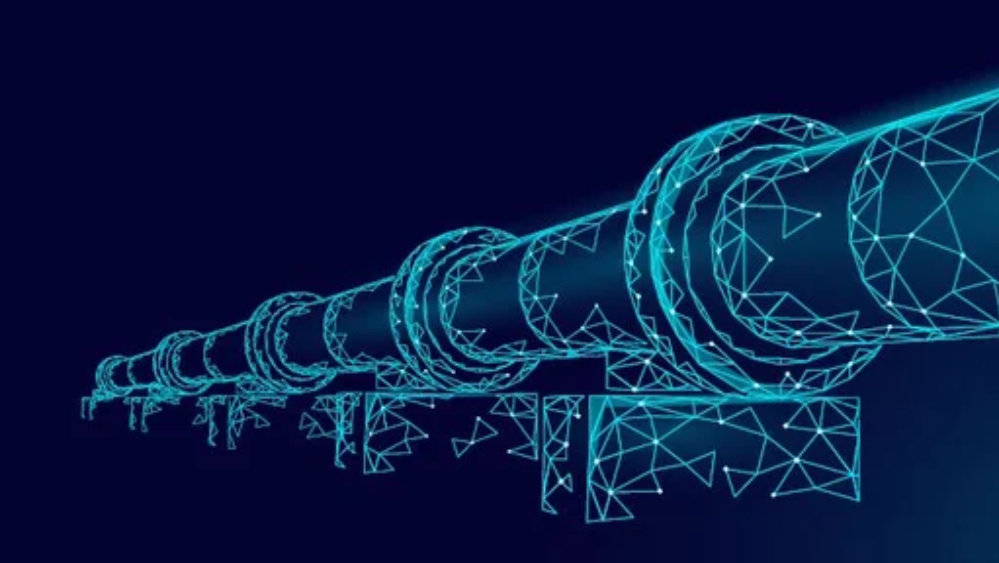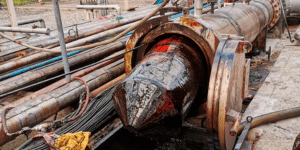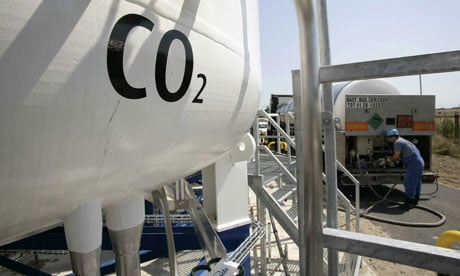5 min read
How to select the most suitable offshore pipeline materials and coatings
Kate Aguilera Apr 10, 2024 4:03:11 PM

Material selection for pipeline systems is a critical task that ensures pipelines can withstand service loads throughout their lifecycle without compromising safety or operability. The decision-making process involves a delicate balance between technical specifications and cost considerations to maximise economic performance while maintaining the highest safety standards.
Technical factors influencing material selection include compatibility with internal fluids, strength against internal pressures and temperature fluctuations, weldability, resistance to external corrosion, weight considerations, material availability, and installation requirements. Our expert John French sheds light on these complex aspects, focusing particularly on the more common considerations in pipeline material selection.
Material Selection
The primary requirement for material selection is to specify a material that will provide sufficient strength to resist pipeline service loads throughout its full lifecycle. Technical selection factors must also be balanced with cost factors to ensure that economic performance is maximised while pipeline safety and operability is not compromised.
Technical selection factors include internal fluid compatibility, strength to resist internal pressure and temperature, weldability, external corrosion resistance, weight control, material availability and installation requirements.
The topic of material selection is wide and complex but this article addresses some of the more common aspects.
Fluid compatibility
Pipelines are used to transfer water, gas, or oil products either as single phase or multiphase product streams. In many cases, these fluids are untreated and contain condensed or formation water, CO2, H2S or sand.
Carbon steel is often the most cost effective and easily available material but is susceptible to corrosion in the presence of CO2 and H2S so detailed corrosion assessments are carried out to determine the extent of corrosion predicted over the lifetime of the pipeline. The outcome of the corrosion assessment will be a recommendation for a sacrificial thickness of steel known as the corrosion allowance. This corrosion allowance can safely be lost during service without compromising the strength of the pipe.
Where the required corrosion allowance becomes excessively high, alternative methods are required to control internal corrosion:
- Injection of corrosion inhibitor chemicals
- Making use of corrosion resistance alloys (CRA) instead of carbon steel
- Lining the pipeline with corrosion resistant materials
Corrosion inhibitors
Corrosion inhibitors can be added to the flow. They provide a protective coating to the inside wall of flowlines and are developed to suit the individual application. Corrosion inhibitors typically slow the rate of corrosion by a factor of 10.
There are various methods for introducing corrosion inhibitors to pipeline systems. The main methods are:
- Continuous injection – This is the preferred method to give reliable corrosion control. The inhibitor is injected through an injection line at rates from 2 ppm to 100 ppm according to the corrosivity of the fluid.
- Batch treatment – This can be used where no injection facilities are available. It is usually batched through a pig launcher in a diluted form of diesel/kerosene. Batches normally range from 80 to 400 litres (20 to 100 gal US) per week depending on size of pipeline and corrosivity of fluid
Corrosion resistance materials
CRA materials are significantly more expensive than carbon steel equivalent but offer excellent corrosion resistance. However, the use of CRAs such as duplex and superduplex brings with it the risk of additional failure mechanisms that need careful specialist assessment:
- Chloride Stress Corrosion Cracking (CSCC) is a form of localised corrosion that occurs on passive materials, such as stainless steels or corrosion-resistant alloys. This type of corrosion happens when the material is mechanically de-passivated by a residual micro-creep. CSCC is an extension of the classical stress corrosion cracking that can happen to stainless steels (both austenitic and duplex) in aerated brines. It typically occurs at temperatures around 60-80°C and is characterized by cracks propagating either intergranularly or transgranularly.
- Hydrogen Induced Stress Cracking (HISC) - Hydrogen Induced Stress Cracking HISC is caused by three phenomena: tensile stress, a susceptible microstructure, and a hydrogen source. Duplex stainless and supermartensitic steels are known to be susceptible to HISC. Stress deforms the surface, increases defects, and leads to deformation. These conditions are frequently met for subsea components, making HISC a crucial consideration in their design.
Internal pipe lining
Pipelines can be lined with plastic (polyethylene) to provide layer that is resistance to internal corrosion. Plastic liners are susceptible to gas permeation and are restricted to relatively lower operating temperatures so are normally reserved for water injection pipelines.
For higher temperature and gas service pipelines, a layer of CRA can be clad to the inside of the pipe. The purchase cost is less than a thick-walled wholly CRA linepipe and because we can take advantage of the stronger grades of steel, it may result in a thinner wall overall. These pipes are usually limited to flowlines because it is more cost-effective to take out corrosive product at the facility than to clad a whole length of export line.
Strength
Carbon steel pipe materials are available in a range of grades with increasing levels of strength. Commonly selected grades are X52 to X70 but stronger grades are available. Given that steel costs about the same per tonne regardless of grade, why should we stick with X70 and not go for twice the strength?
The answer to this lies in terms of the ductility, toughness and weldability of the steel.
- Ductility is the ability of the material to deform plastically before failure – ductility reduces with higher grades.
- Weldability means that the pipe can be welded together aboard the laybarge without the need for heat treatment – this is more difficult with higher grades.
- Fracture toughness is the ability of the material to accept defects (such as weld inclusions) without these leading to brittle fracture.
As a result of these requirements, most pipeline steels come in the L360 to L485 (X52 to X70) range, although higher grades to L830 (X120) are used for landlines, and lower grades down to L290 (X42) have been used for weight (reeled pipe) – or even grade L175 (A25) for PSL1 pipe.
External coating selection
External pipeline coatings are selected with 3 purposes:
- External corrosion control
- Thermal insulation
- Weight
Weight coating will normally take the form of a layer of concrete sprayed on to the outside of all other coatings. Weight coating is only required when the pipeline is unstable and needs to be made heavier.
Thermal insulation is not required on many pipelines. It is only used where the flow assurance calculations show that the temperature needs to be kept high to prevent solids such as wax or hydrates forming in the pipeline that would block the flow.
External corrosion coating is required on almost all pipelines and most commonly takes the form of glass flake epoxy or layered polyprolylene systems. There are a number of variants with increasing durability and cost. In most cases, the coating will be combined with a cathodic protection system to provide protection in areas where the coating may fail. The selection of external corrosion coating is often governed by cost and availability because even the lowest cost systems can often be sufficient for typical pipeline lifetimes when combined with cathodic protection. Some coatings have limits on acceptable operating temperatures and this is another key factor in selection.
Weight control
Sometimes pipe may need to be made heavier to ensure stability on the seabed. This can be achieved by concrete weight coating but can also be achieved by increasing the wall thickness of the steel, although this is usually not the most cost effective option.
Sometimes, especially in deeper water, pipelines and risers may need to made lighter to reduce the tension in the pipe during installation or operation. In these circumstances, specialist materials such as thermocomposite pipes can be provide combined benefits of high corrosion resistance with lightweight material.
Availability
In an ideal world, the selection of the materials would be based purely on technical acceptability but often availability can be a key influence. Projects are driven by tight timescales and geographical constraints meaning that the first choice material may not be available to the project. In many cases, the selection of materials must be made from a list of available resources taking into account lead times (which can be over 12 months) and capability of local pipe mills.
Cost
As a final stage, a total life cycle analysis is performed, encompassing capital expenditures (CAPEX), operational expenditures (OPEX), and abandonment and decommissioning expenditures (ABEX). This holistic analysis aids in comparing the available material options—such as carbon steel, various corrosion-resistant alloys, and composite materials—based on their costs, benefits, risks, and sustainability over the pipeline's lifespan.
Choosing the appropriate materials for pipelines is a complex but vital part of the design process, directly affecting a pipeline's performance and cost-effectiveness. At Jee, we specialise in guiding our clients through this decision-making process. We offer expertise in selecting materials that best suit your project's needs, from dealing with corrosive environments to ensuring the pipeline can withstand physical stresses. Our approach focuses on delivering practical, straightforward solutions that prioritise the long-term success of your pipeline projects. If you're looking for assistance in designing pipelines or want to find out more click here.



